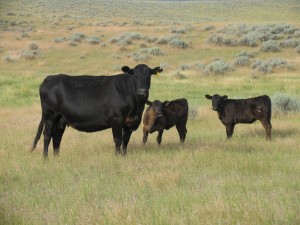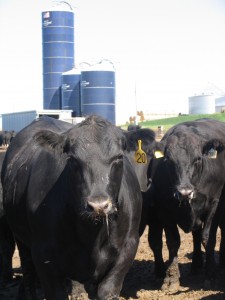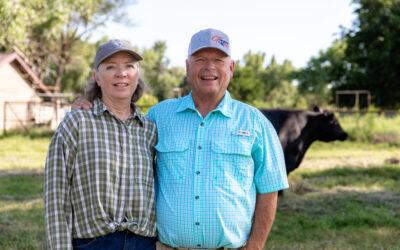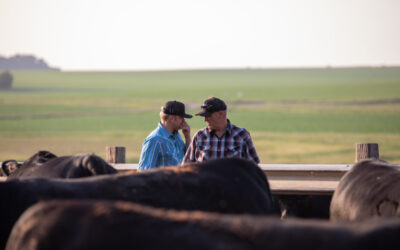THE Question, Part II
If we have our mind made up to start with the correct genetics, then we need to manage the calves and market them in a way that protects carcass quality and sells the cattle to our highest advantage.
There have been countless research trials that document management practices that will protect or enhance marbling. Of course, marbling is only 1 of 10 carcass specs that must be met on the road to a carcass making it into the Certified Angus Beef® brand, but it’s far and away the biggest hill that must be climbed to achieve CAB acceptance.
I would be foolish to attempt to highlight all of those management practices here, but it can be boiled down to a few points. First, health is paramount when it comes to achieving higher quality grade levels. Any calf that contracts pneumonia or has another significant health event in its life is immediately at risk of a less than desirable quality grade outcome. Again, research has proven this out and it simply stands to reason that sick cattle don’t achieve premium Choice and Prime grades as often as their healthy contemporaries.
So, at the ranch level this is just one of the many reasons to implement a complete and properly administered vaccination program. Labor and time are not cheap, but vaccines are a low-cost necessity when it comes to marketing a premium product.
The second item is nutrition. Beginning with the cow’s colostrum, a calf needs adequate, if not “very good” nutrition throughout its life to perform to its genetic potential. This counts for weight gain, health and carcass returns. I wouldn’t advocate expensive feeds that get us out of whack on our cost vs. return calculations, but the research shows a baseline of balanced nutrition must be met if we’re going to get the returns we hope for. Indeed, some cheaper forage-based backgrounding programs are realistic in lowering cost-of-gains in today’s market. However, the old saying that “you can’t starve the profit out of a cow” also holds true for her calf.
Finally, the marketing element is so important. In our segmented industry it’s often challenging to show a true marketing advantage when comparing a superior set of calves to a more common set on the same day. We can’t account for all of the confounding factors, but doing homework to create a market for yourself is time well spent. I urge producers to get to know their potential buyers and spend the telephone time and gasoline, as necessary, to make this happen. There is nothing more compelling than a steady and sincere effort by a producer to build relationships and effectively communicate the facts and history of their ranch-raised calves. If genetics and management are at a level of excellence, then it only makes sense that a little humble, but compelling, salesmanship should create active bidding when it’s time to sell.
Of course, if those calves are truly superior, then it’s often advantageous for the rancher to retain them all the way through the feedlot so that the built-in efficiencies and quality can be realized. That topic is another chapter that we’ll possibly open on another day.
Still have questions on how to produce CAB? Leave them in the comments. We’d be glad to keep this conversation going.
~Paul
You may also like
Helping Hands, Helping Herds
“When I die, I want to come back as one of your cows,” murmurs a friend to Steve Zybach. Full to the brim from an alfalfa ration every day, bountiful fields of lovegrass stretched out across the Texas Panhandle—and owners who leave no ounce of cattle care up for question. The Zybachs’ motivation for this level of dedication to their Angus cattle is simply love.
System Over Scale
For Dallas Knobloch, it’s not about being the biggest feedyard—it’s about building a high-quality system that works. Today, with Tory’s wife Sadie and daughter Ivy, the Knobloch family owns and operates 4K Cattle. They feed 2,500 cattle at eight locations within 10 miles of home, manage 1,000 acres of crops and run a 125-head cow herd, all near Hills, Minn.
Data-Driven Progress and Partnerships
Discussions at Feeding Quality Forum reaffirmed the industry’s commitment to quality, transparency and innovation. With record Prime rates and strong consumer demand, producers who invest in genetics, health and relationships are positioned to drive progress and capture premiums.





